The type conversion is a central concept in programming, especially in a dynamically typed language like Python. It allows you to flexibly combine and adjust different data types. However, it can often be challenging to understand the conversion correctly and avoid errors. In this guide, you will learn how type conversion works and how you can use it effectively to improve your programming skills.
Main insights
- Type conversion allows you to convert data between different types, for example, between strings and integers.
- When converting floating-point numbers to integers, information after the decimal point is discarded, with no rounding occurring.
- Dealing with types is essential since incorrect data types can lead to errors, such as Invalid literal for int.
- Using exception handling is recommended to deal with unexpected errors.
Step-by-step guide to type conversion
Step 1: Introduction to types
Before we deal with type conversion, it is important to understand the basic data types in Python. Python supports various types such as integers, floats, booleans, and strings. Each type has its own properties and purposes. For example, when working with boolean values, they are of boolean data types.
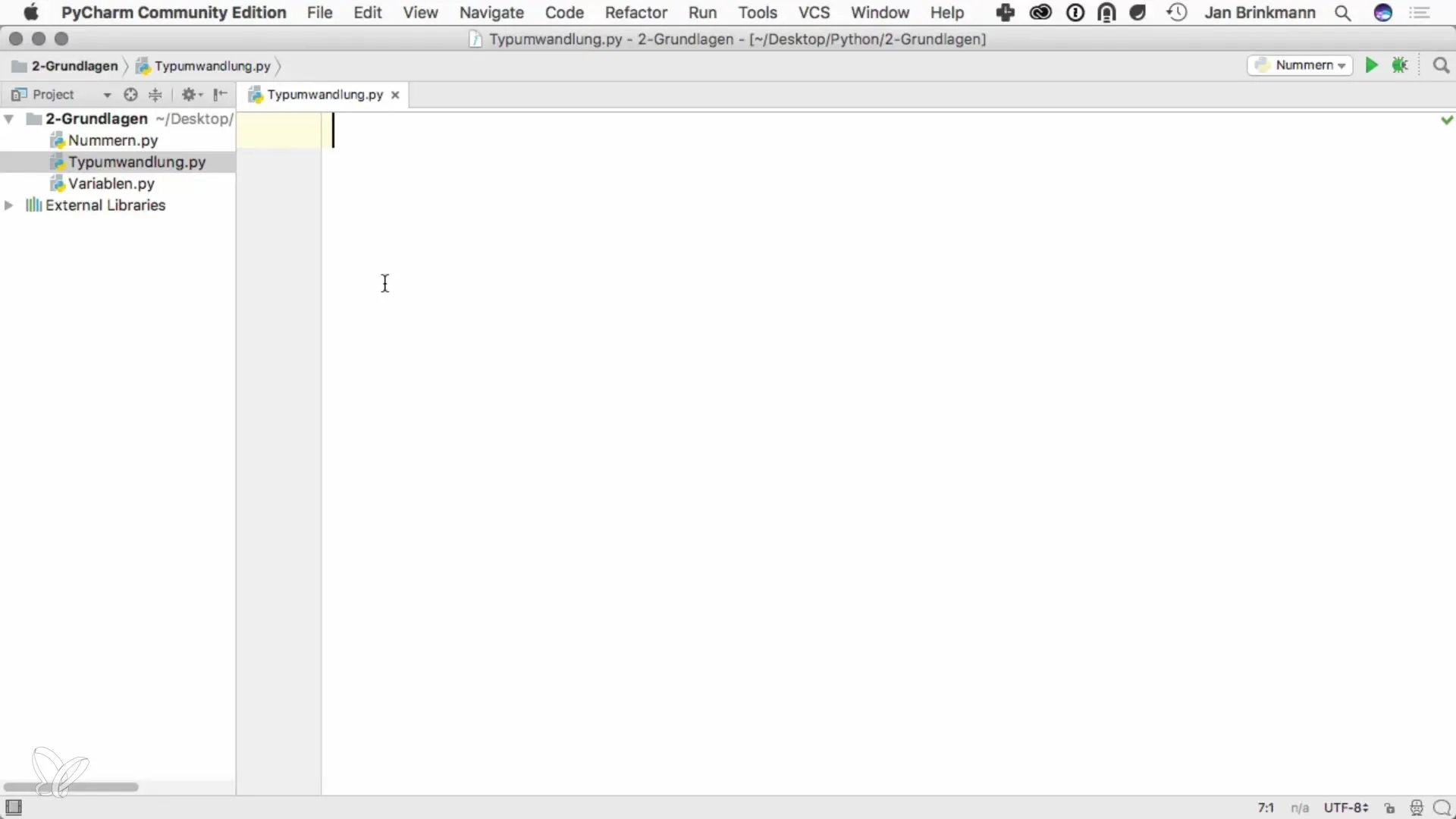
Step 2: Convert boolean to integer
An example to demonstrate type conversion: You have a boolean value, say a = True. If you want to convert this value to an integer, you simply do this by using the command int(a). Here, True is interpreted as 1 and False as 0.
Step 3: Show the result of a conversion
When you execute int(a), you get the result 1. This corresponds to the binary logic of a computer: power flows (1) or does not (0). Conversely, this also works: If you enter int(False), the result will be 0.

Step 4: Convert floating-point numbers to integers
Another example is the conversion of floating-point numbers to integers. For example, if you have a price given in euros, say 1999, and you want to convert it, you can do this with int() as well. It is important to know that no rounding occurs in this case: after the conversion, the value is reduced to 19, ignoring the decimal point.
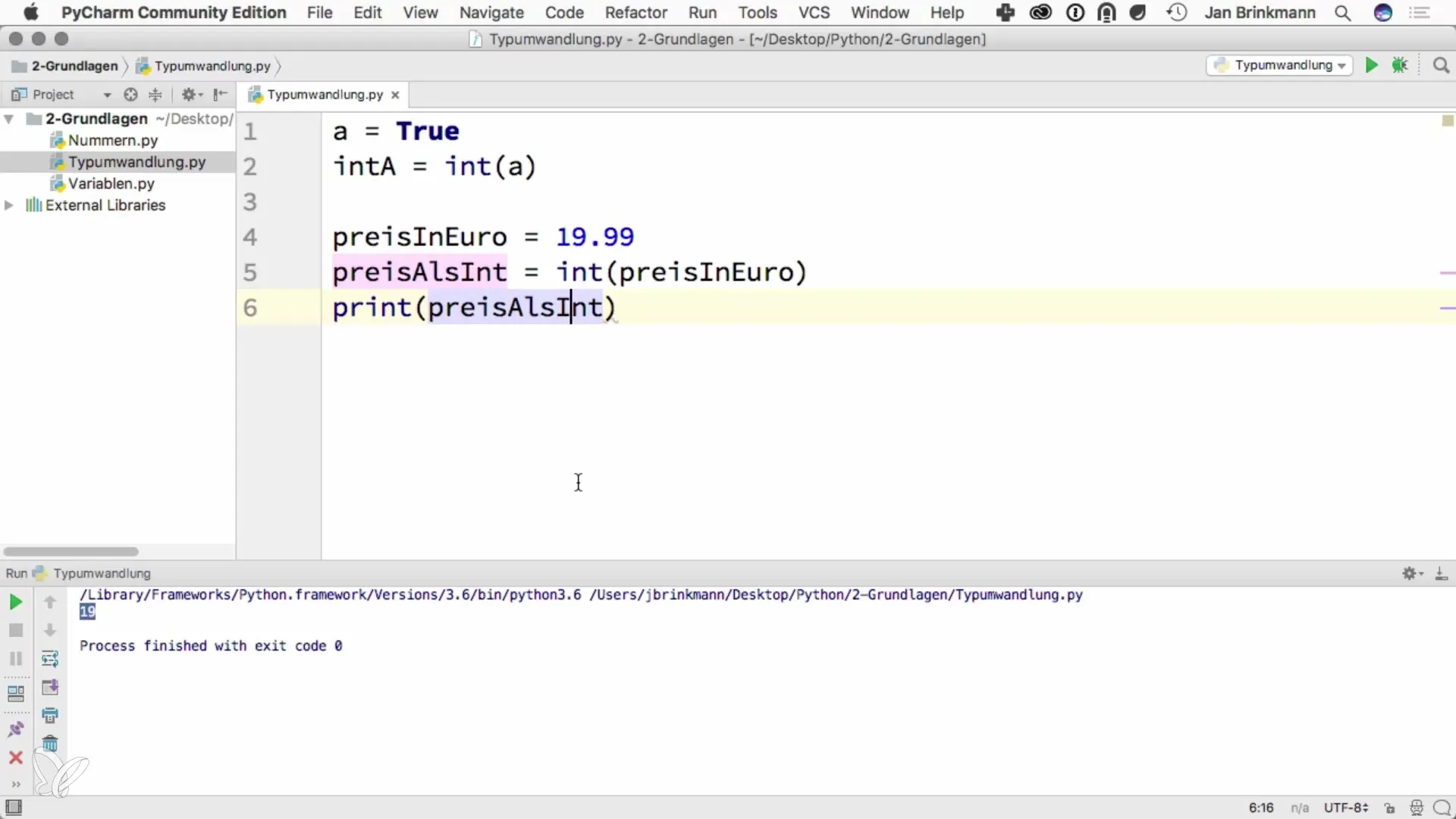
Step 5: Convert strings to integers
Strings can also be converted to integers. Suppose you have an age that is represented as a string, for example, age = "35". To perform calculations with it, you can use int(age). This converts the string to an integer, and you can, for example, calculate how old you will be in three years.
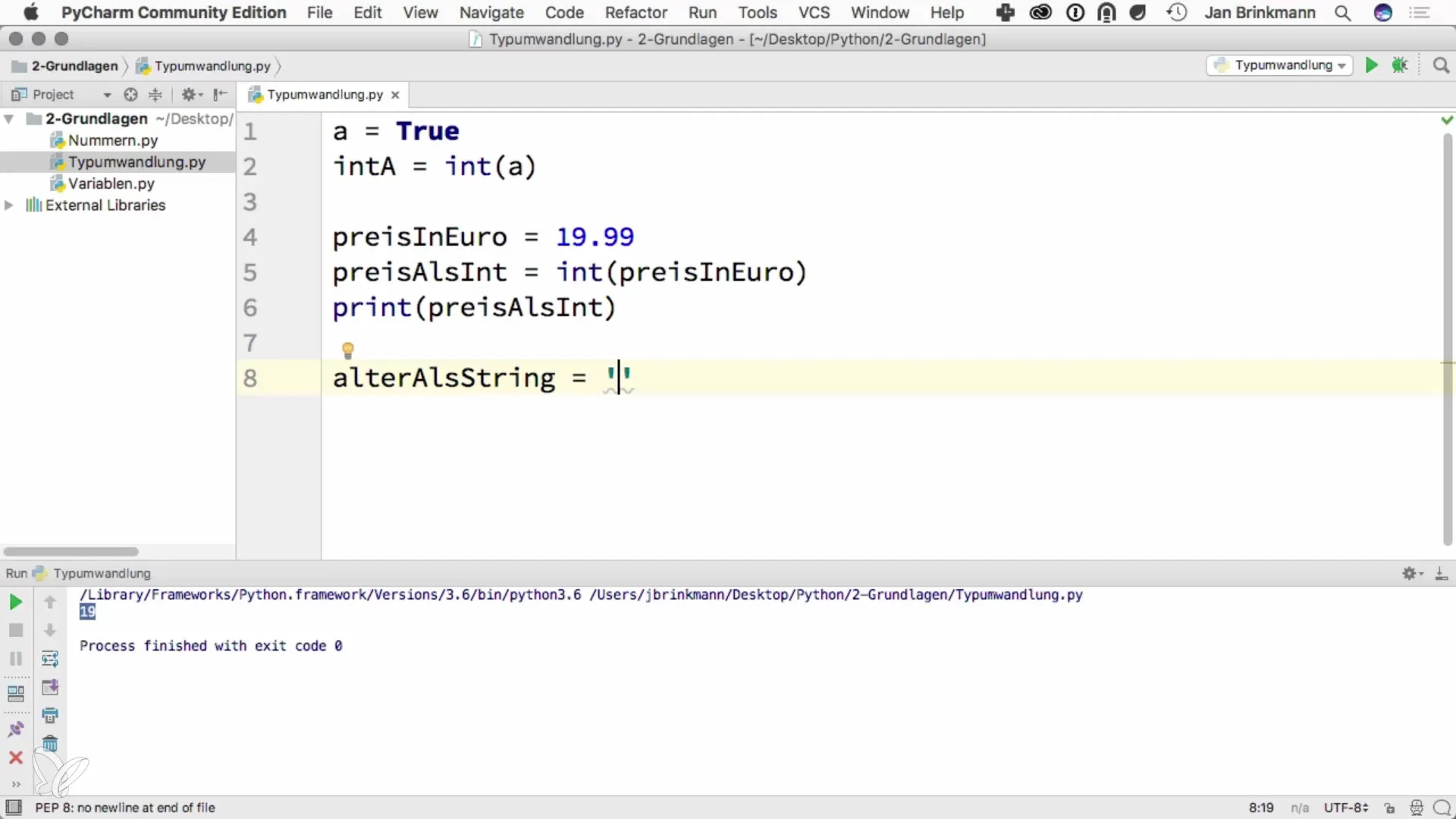
Step 6: Error handling
But what happens if you try to convert a string that cannot be interpreted as a number? Suppose you enter age = "abc" and then try to execute int(age). In this case, you will get a ValueError because the string cannot be converted to an integer. Therefore, it makes sense to use exception handling to catch such errors elegantly.
Step 7: Convert float and integer
However, if the string contains a valid number like 1999, you can correctly convert it with float(). This way, you can ensure that your code remains robust and error-free.
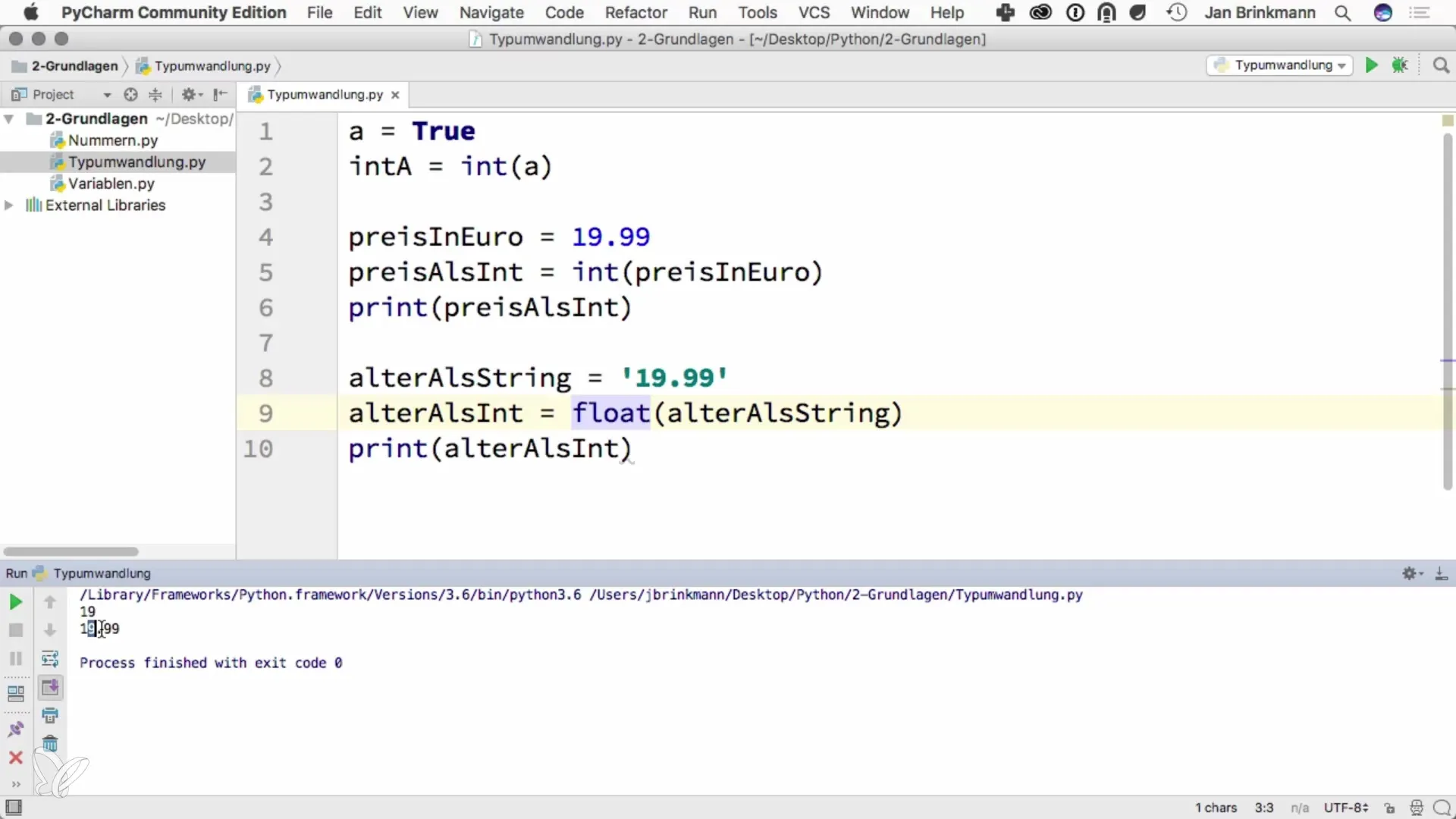
Step 8: Types and their complexity
There are also more complex cases where type conversions can become difficult. For instance, if you try to convert an integer value defined as a string consisting of letters, this will lead to a ValueError in Python. Robust programming takes such scenarios into account from the outset.
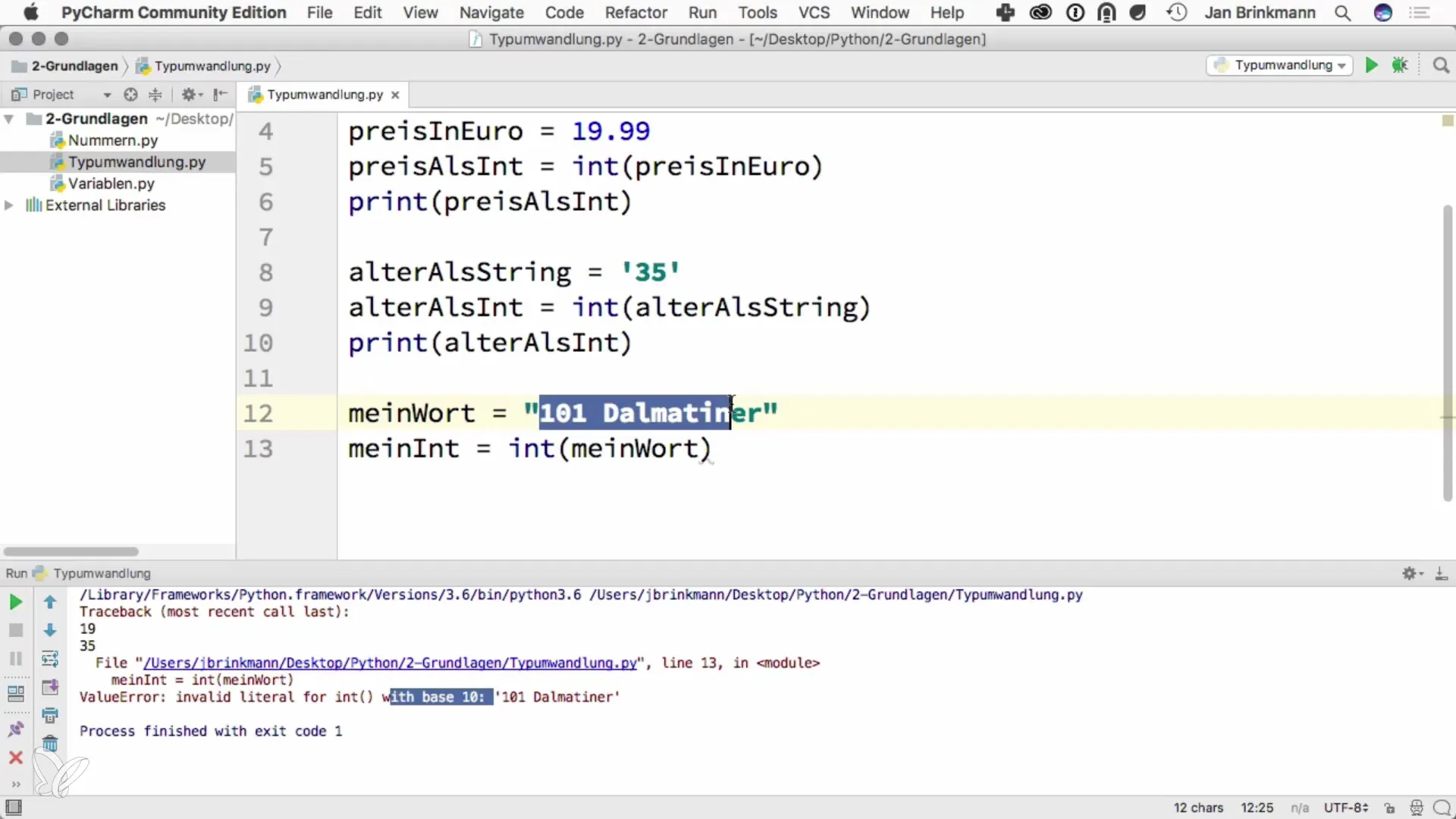
Summary – Type conversion in Python: Prepare for data
Type conversion is an effective tool for handling different data types in Python. You have learned how to convert between booleans, integers, floats, and strings, as well as the importance of error handling in programming. This equips you to better identify and solve problems in your Python programs.
Frequently Asked Questions
How does type conversion work in Python?Type conversion in Python is done through functions like int(), float(), and str(), which allow data types to be converted.
What result do I get when converting True to an integer?True is interpreted as 1 in Python, while False is interpreted as 0.
What happens if I try to convert a non-numeric string to an integer?You will receive a ValueError because the string cannot be converted.
Is rounding done when converting floats to integers?No, when converting floats to integers, the values after the decimal point are simply discarded.
How can I handle errors in type conversion?You can use exception handling to catch error messages and handle them by using try and except.


